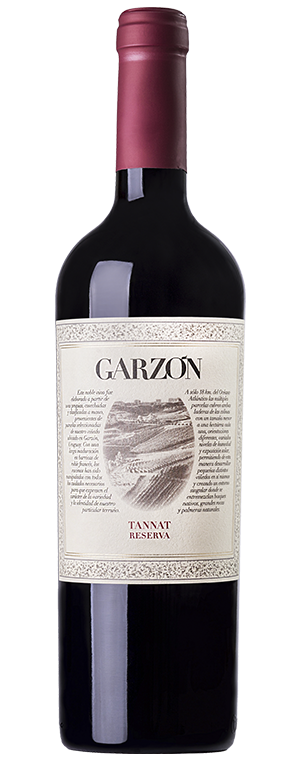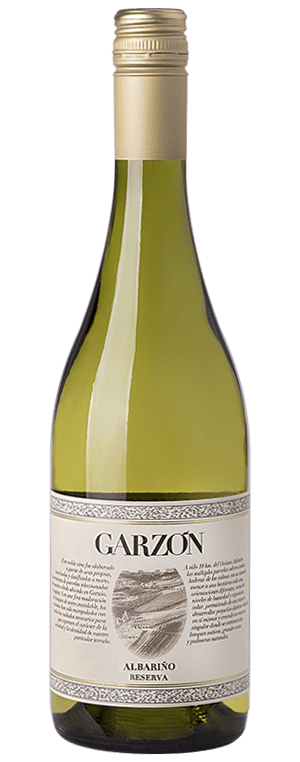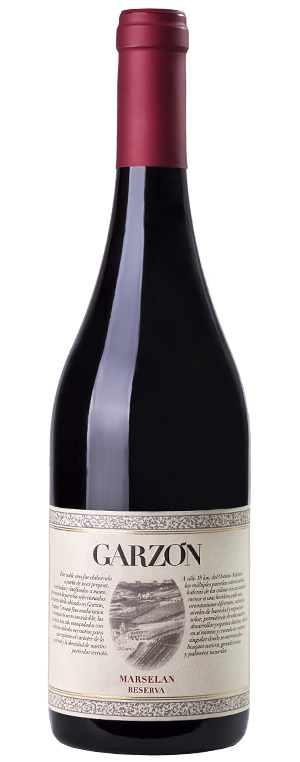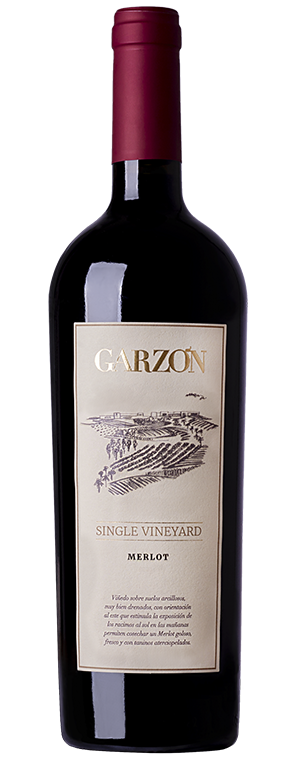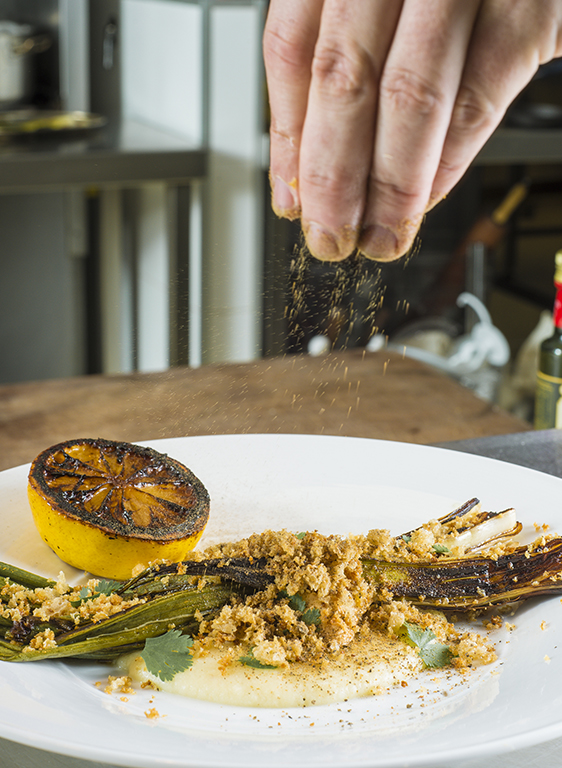EXPORT MANAGER OF BODEGA GARZÓN.
- Tell us about your story and what was your connection with the wine sector before coming to Bodega Garzón.
I am Uruguayan, I lived 16 years in Chile and three years ago, I came back to Uruguay to join Bodega Garzón’s team. My history with the wine industry began in Chile, where I worked several years in the export team of Concha y Toro. It was an excellent experience, I learned a lot about the industry, its challenges and the importance of being present in the markets.
For me wine has always been a hobby and a pleasure that I shared with my family, but I never thought it would give me so much.
- How and when did you get the offer to work at the winery?
I got the offer in September, 2016. I was very lucky because the search for Export Manager included Argentina and Chile. I believe they never expected to find a Uruguayan working abroad in the wine industry, and this certainly helped me because there was virtually no adaptation period. I have always wanted to return to Uruguay, but I never thought it would happen so soon nor that it would be to work in this industry that I so much enjoy.
- Which are the main markets where Bodega Garzón has presence?
Uruguay is still the biggest market, but Brazil and USA are close behind. Both of them have great potential and much still remains to be done. There are other very important markets, such as the Nordic countries (mainly Sweden), United Kingdom, Japan, Holland and Canada. Today, exports account for approximately 75% of our sale of wines and we distribute to over 35 countries (5 continents).
- How would you describe the winery’s evolution in the international market?
The evolution has been very fast, to be honest, much faster than I imagined when I first took on the challenge. The brand has positioned itself as a global reference for quality and with a premium concept that boosts sales. It seems unbelievable, but our wines are truly competing with the world’s finest wines, even though it is a very young vineyard; it will only get better.
I believe that this major growth is a result of different variables, some of them controllable and some fortuitous. The quality of the wines is certainly a result of the amazing privileged terroir that we have in Garzón, and of the technical team that has carried out an excellent job in optimizing the expression of the fruit obtained from the vineyards. However, I also think that this project was developed in a favorable period, where there is a “fashion trend” of tasting wines from unknown origins and unusual varieties.
- How are Uruguayan wines valued in these markets?
Uruguayan wines are practically unknown throughout the world, it is a completely niche product (except for Brazil). This poses a huge challenge and also a great opportunity, it depends on how you see it. We see it as a chance to position a new origin in the global wine map and to offer a product that, so far, was not in demand because it was unknown. Bodega Garzón is the undisputed leader in export of Uruguayan wines, but this also has a positive impact on the entire industry. Many doors have been opened to other producers, which is great! In order to consolidate this category it is important to have several producers offering top quality standards, and wines that are fresh, elegant and with plenty of fruit. Consumers must have different options to choose from, but always offering great quality, closely aligned with the proposal. We are currently in the final stage of this positioning, so it is extremely important for all producers to be responsible regarding the products they offer.
- To which destinations do you travel the most? How do you manage to organize your work with so many business trips?
In the last three years I have traveled between 130 and 160 days per year which it is a lot but also absolutely necessary, because it is very important to be present in the markets. We call it “go out to the streets” but basically, it means to be driving sales, being the face behind the brand and offering tools to the entire distribution chain to help them increase the sale of our products. My tasks are very varied; I present our wines client by client, talk with the media, meet with state monopolies, offer training courses to sellers, negotiate with importers, etc. The markets I visit the most are USA, Mexico, United Kingdom, Holland and other European countries.
During the first years, I also visited Asia, but given its great potential and how demanding it is, we have a person living in Hong Kong that handles everything from there. It is hard to organize work having so many trips and visiting markets in so many different time zones, but with proper organization is it possible. The working schedules are very challenging, and it is necessary to be flexible in order to maintain a good communication with clients, because there is practically always someone working.
- From all the cities you visited, which ones would you recommend the most?
The world is full of breathtaking and authentic cities, it is hard to choose, but I will name some great cities that are also very different from each other: Hong Kong, Sydney, Jerusalem, Cape Town, Amsterdam, London, Stockholm, Saint Petersburg, New York, Vancouver and San Francisco.
- How were Bodega Garzón’s wines received in the United States? How is it growing in this market?
The United States is one of the markets where we are having higher growth (in the last 3 years we tripled sales) and without a doubt, it has great development potential. It is the world’s biggest wine importer (without considering its local production) and Bodega Garzón has had an excellent reception among the community of sommeliers and the specialized media. The visits of influential Americans to luxury places of José Ignacio and Pueblo Garzón, helped to spread the word about this project. Also, several restaurant chains (including Morton’s and Fogo de Chao) have added our wines in all their restaurants at a national level, which really helps to distribute to all states. We must bear in mind that it is a very complex market, given its three-tier system (it is the only country in the world that has this system) and its competitiveness, because almost every producer wants to be present.
- How is the market in the UK evolving?
The market is currently facing a tough moment due to the Brexit uncertainty. Nobody knows exactly how it will affect the UK, so the market is trying to prepare itself, maintaining high levels of stock. We must wait and see what happens, but the pound will probably devalue and the market might stagnate. If there is no exit agreement with the European Union, more opportunities may arise for commercial agreements with countries such as Uruguay.
- Tell us about the landing in the Asian market and how do you see the evolution of wine consumption in that region?
The Asian market is said to be the future of the industry, because consumption of wine is practically zero but it is growing a lot. Due to the size of its population and its economic growth, this market has endless potential. There are obviously markets more developed than others, for example Singapore, Hong Kong and Tokyo, where this industry is more mature. On the other hand, China, India, Vietnam and the Philippines have yet to develop. We have noticed in consumers, great interest in learning about this subject, and this has had a major impact on the demand. Given that wine represents an important aspect of western cultures, it carries a social component and prestige that makes it an aspirational product among Asians.
Asia is a very demanding region, where we must invest a lot of time and where relations are built face to face. This is why our latest addition to the export team – Giancarlo Marinello – is living in Hong Kong and developing these markets. This is a slow process but has great potential, so we must be patient.
- Which are the main features of Bodega Garzón that are being lauded throughout the world?
Some of the outstanding features of our wines are their natural acidity and freshness obtained thanks to this privileged place with sea influence that enables a colder climate. Also, the balance between the fruit and the structure of wines are highly praised; they are easy to drink and enjoy. I have always been interested in the philosophy of minimal intervention in the elaboration of wines (let the grapes express themselves) and the project’s sustainability (it is the first winery in the world to obtain LEED Certification) that it is becoming increasingly important in our world.
- How do you imagine the winery 10 years from now?
It is hard to imagine this because Bodega Garzón is only 10 years old (since the first vineyards were planted) which in the world of wine is almost nothing. However, it has already achieved great milestones, not only in the category of Uruguayan wines, but also at a global level. In its short history, it has obtained outstanding awards in the world’s best contests (including New World Wine of the Year by Wine Enthusiast, the first time that a Uruguayan wine obtained this award). It has also caught the eye of experts throughout the world, as a practically unexplored origin that delivers top quality wines.
I am certain that in 10 years, Bodega Garzón will be a global benchmark on quality and innovation; it will be credited with the development of a wine-growing region (Maldonado) that will surely give a lot to talk about and will be the best-known brand in this category (Uruguayan wines) that will have increased exponentially in the global scenario.
The development and consolidation of Bodega Garzón has been so fast that it does not seem far-fetched to think that 10 years from now it will stand among the world’s best wine producers.

